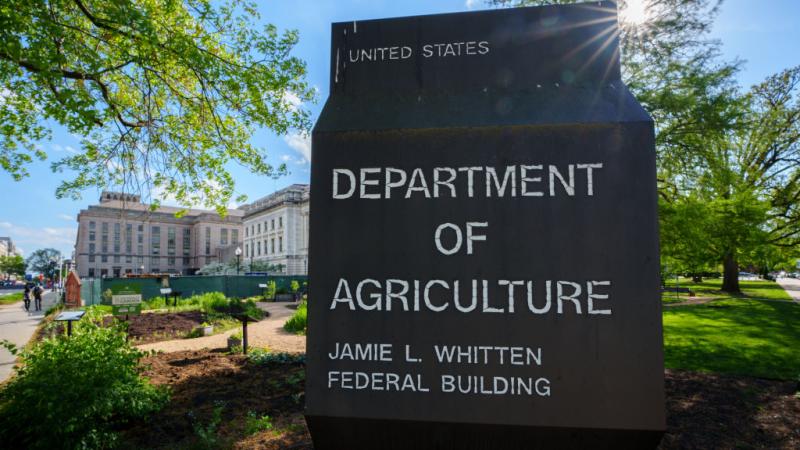Consumers feel pandemic pinch of higher grocery prices but relief may be near
Pandemic has driven up food costs notably since the start of the year.
Grocery prices remain high throughout the United States as the COVID-19 pandemic and resultant mitigation measures continue to wreak logistical havoc on various food industries and supply chains.
The Bureau of Economic Analysis's national price index graph shows that overall food and grocery purchases rose roughly 5% through June since the start of the year, with most of the rise occurring after March, when the coronavirus was spreading rapidly and state governors began imposing economic lockdown measures and stay-at-home orders.
That rise departed from the prior two years' essentially flat price indexes, with prices in January of this year less than 1% higher than they were in February of 2018, according to BEA.
Some food categories spiked more dramatically than others. Meat prices shot up roughly 11% through June compared to January. Eggs, meanwhile, jumped 18% between January and March.
Meat, and groceries in general, both continued to climb in June, as did fresh fruits and vegetables, which were up nearly 3%. Eggs, on the other hand, dropped 7% since their peak in March, though they were still nearly 10% elevated from January. Cereal prices, meanwhile, jumped more than 4% since January but appear to be leveling off.
The BEA says that the grocery index fell 1.1% over July, signaling that prices may have peaked over the summer and could be dropping, even as they remain elevated from pre-pandemic levels.
Notably, beef fell 8.2% over the month, while meat, eggs, fish and poultry dropped 3.8%.
Logistics, localized outbreaks have driven up prices
A significant driver in the spike in grocery prices was the major jump in meat prices, which were in turn driven significantly by COVID-19 outbreaks and closures at meat plants.
Numerous major meat plants across the U.S. temporarily shuttered their doors in April and May due to outbreaks in which dozens and sometimes hundreds of workers tested positive for the coronavirus. In late April, President Trump signed an executive order classifying meat processing facilities as critical infrastructure in an effort to keep them open. In late May, the head of major meat processor Tyson warned that the U.S. supply chain was "breaking," and that severe meat shortages could arise in the U.S. over sharply constricted supply.
Temporary shortages were reported in some localities, though USDA officials said at the time that the issue was not one of reduced supply but rather increased demand. Few issues meeting consumer demand have been reported since mid-May.
Elsewhere, a rapid reduction in consumer spending habits created logistical nightmares for many American farmers, The effective closure of much of the country's restaurant industry in March and April led to sharply reduced demand from one of the farm industry's most consistent buyers. The shuttering of schools and the steep drop in hotel bookings and overall travel had similar effects.
Many farmers were left with a surplus of stock, with the logistics of attempting to shift product from the restaurant industry to grocery stores, meaning much of that food went to waste. "The supply was not able to move to where the demand was, and that’s a big part of why you saw prices getting pulled up," Purdue University agricultural economics scholar Jayson Lusk told the Washington Post earlier this month.
Economic slump holds off worst in price rises, fed chair says
Though food prices have risen noticeably since the start of the year, they may have been prevented from rising even further by the broader economic recession that has occurred amid the pandemic.
"For some goods, including food, supply constraints have led to notably higher prices," Federal Reserve Chairman Jerome Powell said in a press conference at the end of July. But, he said, "weaker demand, especially in sectors— such as travel and hospitality—that have been most affected by the pandemic, has held down consumer prices" and kept inflation in check.
The Food Industry Association, an industry advocacy group for food retailers and providers, said in a statement in May that "increases in food prices are driven by dozens – if not hundreds – of different factors operating as a complex algorithm that can be difficult to fully understand."
"Due to COVID-19, for example, in order to maintain social distancing practices many manufacturing lines have had to increase the spacing of personnel working the production, packaging and warehousing functions," the group said. "This generally results in lower production rates per employee, and longer production timeframes to produce the same amount of product as supplied pre-pandemic."
The course of the pandemic, then, could very well result in a fresh increase in food prices at some point if industry practices and state regulations continue to dictate sustained "social distancing" and other mitigatory practices.
Overall, the Bureau of Economic Analysis said prices for food at home last month were up 4.6% from July of 2019.















